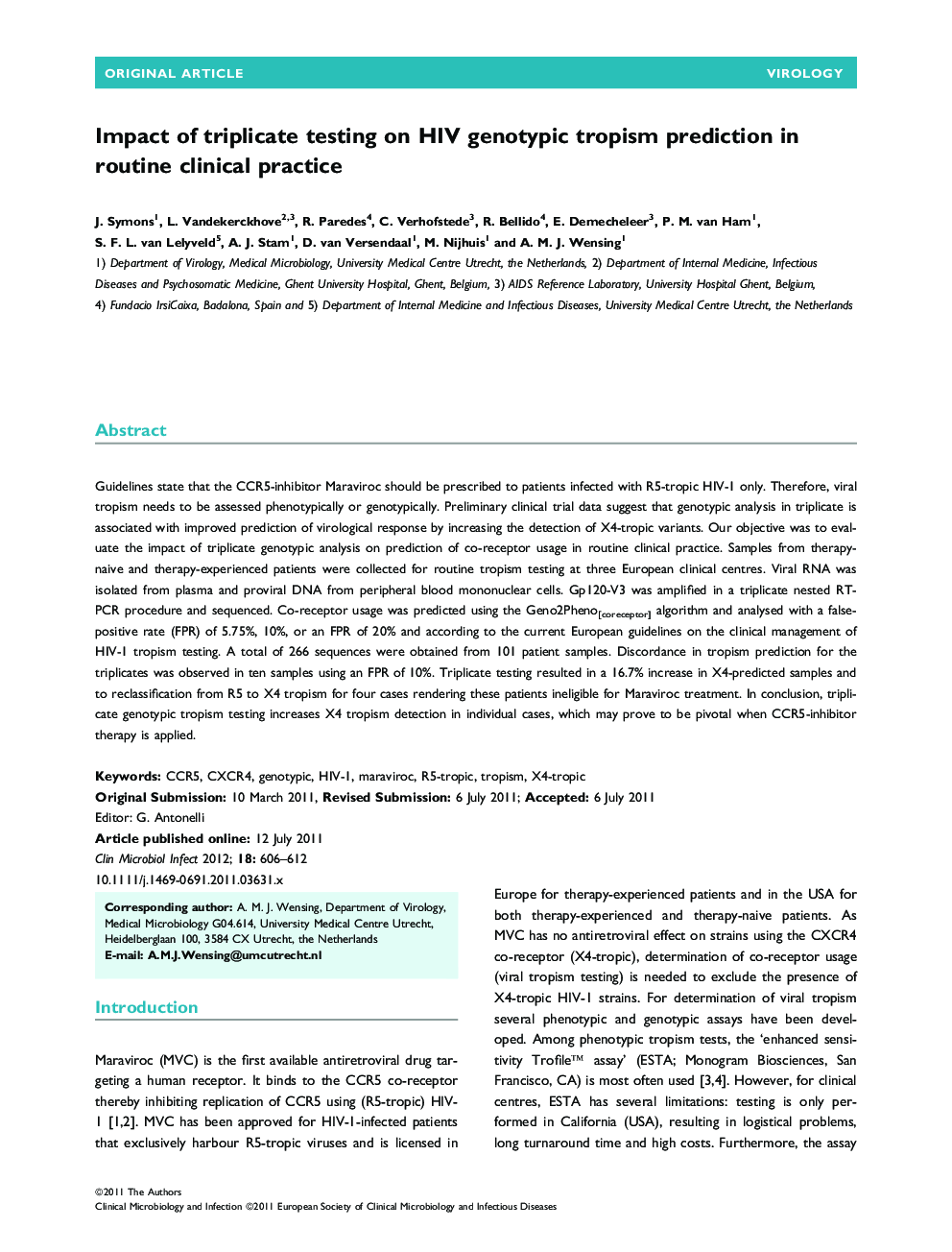| Article ID | Journal | Published Year | Pages | File Type |
|---|---|---|---|---|
| 6130977 | Clinical Microbiology and Infection | 2012 | 7 Pages |
Abstract
Guidelines state that the CCR5-inhibitor Maraviroc should be prescribed to patients infected with R5-tropic HIV-1 only. Therefore, viral tropism needs to be assessed phenotypically or genotypically. Preliminary clinical trial data suggest that genotypic analysis in triplicate is associated with improved prediction of virological response by increasing the detection of X4-tropic variants. Our objective was to evaluate the impact of triplicate genotypic analysis on prediction of co-receptor usage in routine clinical practice. Samples from therapy-naive and therapy-experienced patients were collected for routine tropism testing at three European clinical centres. Viral RNA was isolated from plasma and proviral DNA from peripheral blood mononuclear cells. Gp120-V3 was amplified in a triplicate nested RT-PCR procedure and sequenced. Co-receptor usage was predicted using the Geno2Pheno[coreceptor] algorithm and analysed with a false-positive rate (FPR) of 5.75%, 10%, or an FPR of 20% and according to the current European guidelines on the clinical management of HIV-1 tropism testing. A total of 266 sequences were obtained from 101 patient samples. Discordance in tropism prediction for the triplicates was observed in ten samples using an FPR of 10%. Triplicate testing resulted in a 16.7% increase in X4-predicted samples and to reclassification from R5 to X4 tropism for four cases rendering these patients ineligible for Maraviroc treatment. In conclusion, triplicate genotypic tropism testing increases X4 tropism detection in individual cases, which may prove to be pivotal when CCR5-inhibitor therapy is applied.
Related Topics
Life Sciences
Immunology and Microbiology
Microbiology
Authors
J. Symons, L. Vandekerckhove, R. Paredes, C. Verhofstede, R. Bellido, E. Demecheleer, P.M. van Ham, S.F.L. van Lelyveld, A.J. Stam, D. van Versendaal, M. Nijhuis, A.M.J. Wensing,
